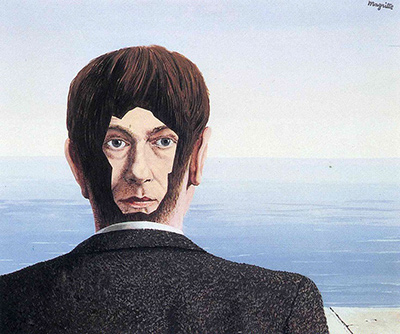The original title of the 38.6 x 32.2 cm portrait was done in 1939 in Brussels, Belgium. He employed a surrealism style during the Brussels pre-war and war years. It’s in a symbolic genre that was creatively painted using gouache and paper.
Psychologically, The Glass House painting is representative of Rene Magritte’s abrupt victory over his innate and rather superstitious fear of the portrait. Although some analysists argue that the portrait represents Edward James others disagree that Magritte had his resemblance in mind when he was painting it. The point of departure that is artistically displayed shows his ability to use paradox and contrast in his artist works.
The front is portrayed from the rear in the Edward James’s portrait. He painted his back by positioning him before a mirror which again portrays his back. The most prominent feature in The Glass House is the bold reversal of the face. The fact that the portrait seems to be penetrating through the skull symbolizes an individual trying to break into his own home.
It’s a mock-realism that displays simultaneous visibility of both the front and the rear view. Rene Magritte is a surrealist painter who was born in Belgium in 1898. Illusions and challenges of visual perception seemed to be aspects of interest to Rene Magritte. He preferred using pictures, curtains, windows and even eyes to explore the issue of how someone perceives objects and whether he or she can trust the image. In Salvador Dali Magritte painted mind hallucinations.
However, he always endeavored to stay within the reality scope of the visible world. Most of Rene Magritte’s artworks of the Mid-1920s were inspired by Pablo Picasso. His style of giving ordinary objects of daily life a unique imagery made him stand out in his painting works. His influence in the pop art movement echoed in several parts of the world even after he died in 1967.




